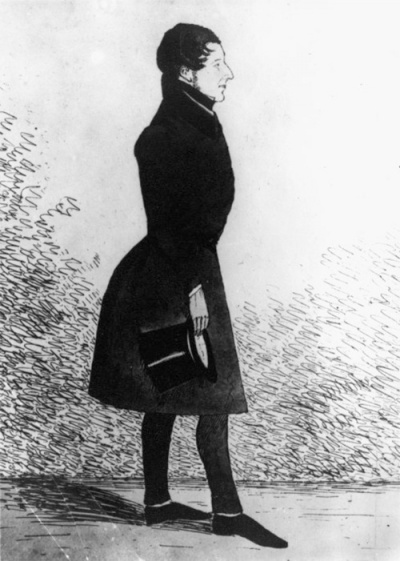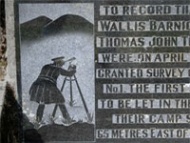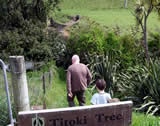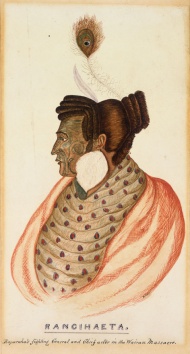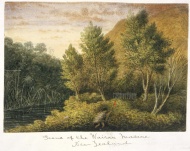Events In History
-
 26 January 1844Governor FitzRoy arrives in Wellington to investigate Wairau incident
26 January 1844Governor FitzRoy arrives in Wellington to investigate Wairau incidentFaced with demands for revenge after 22 settlers were killed in an incident in the Wairau Valley, Governor Robert FitzRoy decided that the Māori had been provoked by the unreasonable actions of the Europeans. Read more...
-
 17 June 1843The Wairau incident
17 June 1843The Wairau incidentAlso known as the ‘Wairau Affray’ and ‘Wairau Massacre’, this was the first serious clash of arms between Māori and British settlers after the signing of the Treaty of Waitangi. Four Māori and 22 Europeans were killed. Read more...
Articles
The Wairau incident

On 17 June 1843, 22 European settlers and four Māori were killed when an armed party of New Zealand Company settlers clashed with Ngāti Toa over the purchase of land in the Wairau Valley, near modern-day Blenheim.
-
Page 2 – Ngāti Toa and the New Zealand Company
The Wairau incident had its origins in the migration of Ngāti Toa and its allies from Kāwhia to the Kapiti region of the southern North Island.
-
Page 3 – Violence erupts
When Te Rauparaha and Te Rangihaeata told William Wakefield to stop the survey, he instructed his brother Arthur to ignore their opposition.
-
Page 4 – The fallout from Wairau
The news from Wairau shocked settlers throughout the colony. The killing of men who had surrendered was viewed as cold-blooded murder. Many feared that these events signalled
Biographies
-
 Te Whiwhi, Hēnare Mātene
Te Whiwhi, Hēnare Mātene
Hēnare Mātene Te Whiwhi promoted the idea of a Māori monarch, which he believed would be vital to protect Māori land.
Read more... -
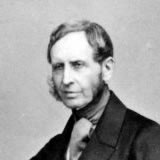 FitzRoy, Robert
FitzRoy, Robert
Robert FitzRoy, who first visited New Zealand as commander of the Beagle in 1835, was Governor from 1843, succeeding the late William Hobson. He served until 1845, when he was recalled to Britain and replaced by George Grey.
Read more...
-
Main image: William Wakefield
William Wakefield, drawn as he appeared at his trial in 1826 for helping his brother Edward Gibbon Wakefield abduct a young heiress.

